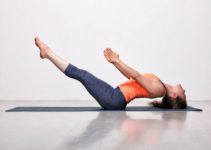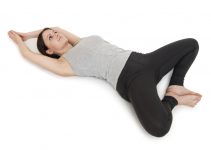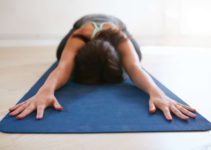- Meaning
- Contraindications
- Steps
- Precautions
- Beginner’s tips
- Modifications
- Variations
- Bhujangasana Benefits
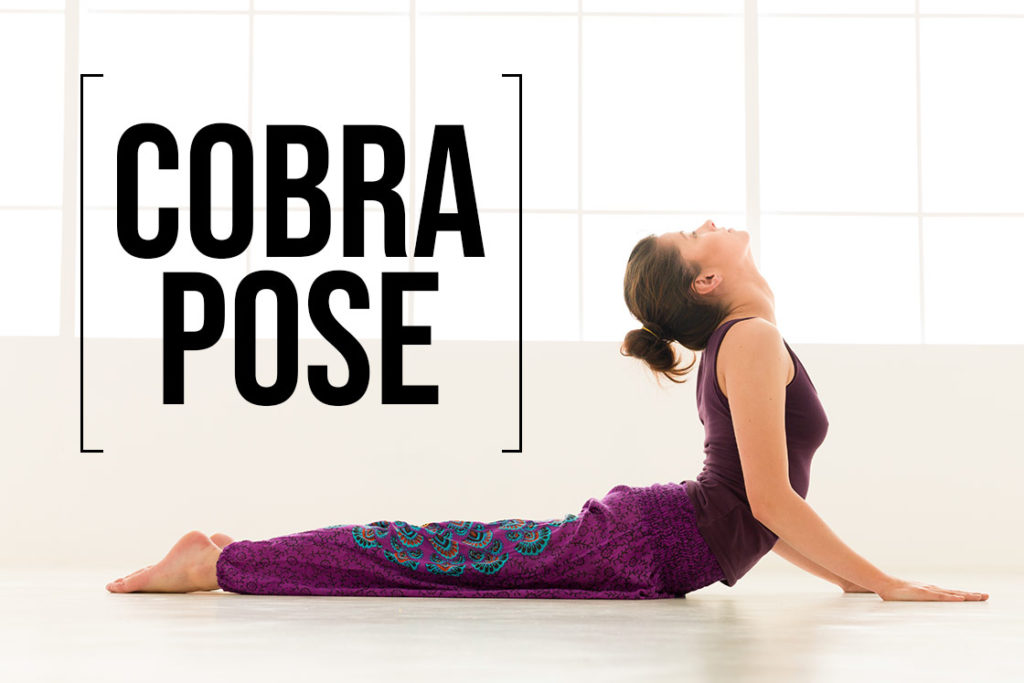
| Sanskrit Pronunciation | Bhujangasana (bhu-jan-GAA-asa-NUH) |
| Meaning | Bhujang = snake / asana = pose |
| Pose Type | Prone beck bending |
| Pose Level | Beginner pose |
| Stretches | Lower Back muscles, hips, hamstrings, thighs, neck, wrist, palms, forearms and shoulder |
| Other Names | Serpent Pose, Snake Pose, Cobra Pose |
Bhujangasana is a back-bending pose that grants the practitioner movability of the lower back and spine. Moreover, It promotes flexibility in the entire torso region that helps in the broadening of the thoracic volume and ultimately promotes respiratory capacities.
Apart from that, it also helps in strengthening of wrist, forearms, shoulder, lower back, and the muscles attached to the spinal column. Due to the beginner level category of this pose, Bhujangasana is one of the easiest backbends which can be performed by almost all of the age group. So, one can promote their mind and body balance with a regular practice of Bhujanagasna in their daily life.
Bhujangasana Meaning
Bhujangasana is a Sanskrit term which is translated as ‘Bhujang’ means ‘snake’ and ‘asana’ means ‘Posture’. Therefore, this asana symbolizes a snake with the hood as when the practitioner fully acquires the pose. Hence, it ensures snake-like flexibility in the practitioner’s passionate practice.
The way snake twists and turn to cross each and every obstacle with the help of its flexible nature of the body. Similarly, by the practice of the Bhujangasana, the practitioner establishes a sense of adaptability towards the physical challenges that arrive for the further back bending practices in Yoga.
Apart from that, As the snakes shed their skin to renew their body surface, it represents rebirth, transformation, or new life. Therefore, an individual by the practice of Bhujangasana transforms his/her body into even more stronger and flexible, which vitalizes life.
Cobra pose is described in the 17th-century hatha yoga text Gheranda Samhita (2.42-2.43). In the 19th century Sritattvanidhi, the pose is named Sarpasana, which similarly means Serpent Pose.
Practice Guide
Practitioners can go through the following points for the safe practice of Bhujangasana.
Contraindications of Bhujangasana
- Practitioners with the condition of lower back pain, sciatica nerve should avoid going deeper in Bhujangasana. In the case of a basic backbend in Bhujangasana one should consult any certified yoga teacher before practice.
- Women with pregnancy and those having a menstruation cycle should refrain from doing this asana. Both situations are critical, so, practitioners should avoid until or unless the body becomes normal.
- Practitioners who have undergone surgery on the abdomen, waist, or any of the parts that might be affected by practicing this asana, should avoid it. This might lays stress on the freshly formed tissues filling the incision.
- In case of injuries of the wrist, shoulder, neck, spine and lower back one should strictly prohibit himself/herself from the practice. It would worsen the previous condition or might cause permanent damage to that body part.
Preparatory Poses
- Setu Bandhasana (Bridge Pose)
- Urdhva Mukha Svanasana (Upward-Facing Dog Face)
- Sarvangasana (Shoulderstand)
How to Do Bhujangasana (Steps)
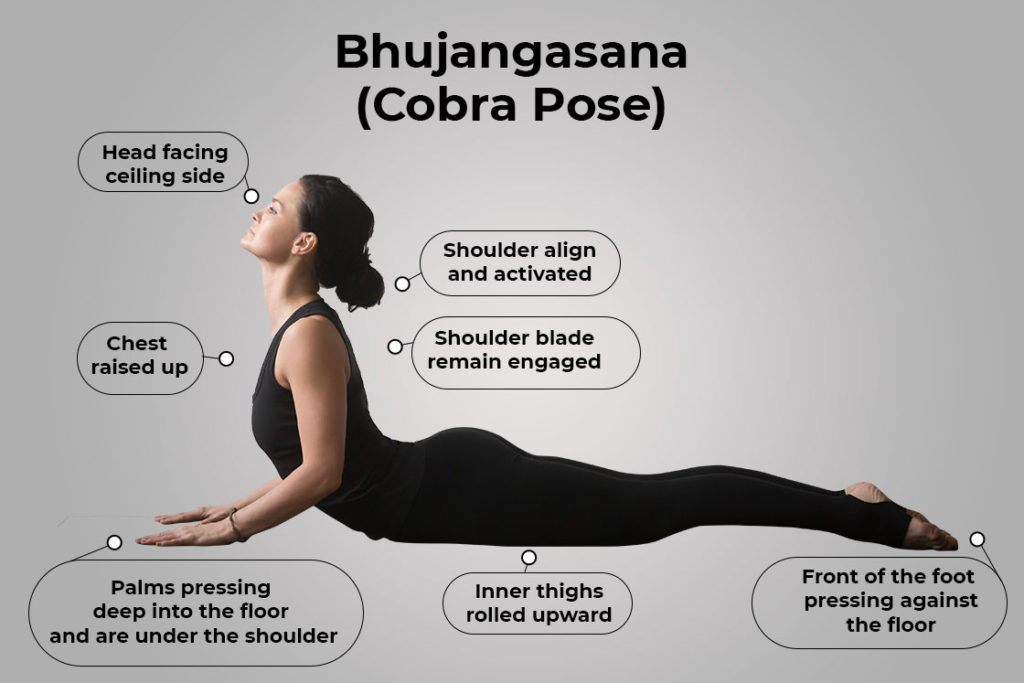
- Begin by lying prone on the floor, keep your hands to either side of the body and legs straight with toes touching each other.
- Now, move your hand from the present position to the shoulder level and place palms firmly on the floor with a bent at the elbows.
- Afterward, press into the floor through your palm to lift your upper body in a manner like head, neck, and torso.
- Now, lay stress on your hips and thighs along with firmness in your shoulder blade. This will keep the arch in the neck and back alive.
- This is the final position of Bhujangasana maintain here for 20 to 30 seconds or as per your comfort level.
- From here, slowly come back by reducing the arch in the neck, back, and chest, head touches the floor. Bring your one on another under the head and rest your head on it. Now, breathe and then relax.
Follow up Pose
Precautions
Avoid injury and safe practice with precautions in bhujangasana;
- While lifting up the upper body practitioners should focus on their hand’s placement. There should not be too much or too little space in between the hands. They should align right under your shoulder for the proper upliftment.
- Practitioners should avoid lifting the upper body with a jerk, which might not be good for the lower back muscles. One should always let his/her body acquire Bhujangasana gently by disconnecting the contact of lower ribs from the floor.
- When a practitioner begins to lift their body off the floor make sure that your lower body or legs remain straight. This could cause knees swaying to either side of the body, prevent this by pressing your pubic bone and the front portion of the feet.
Beginners Tips
- Beginners with stiffened lower back and neck should avoid forcing with these two areas in cobra stretch. In the case of the neck, one should gaze to the floor or avoid gazing upward to the sky or ceiling side. Whereas, bend your back as per the flexibility.
- New practitioners due to lack of experience might stress their palms to raise the torso, so, they can deepen the backbend. However, it would be injurious to do so, instead of forcing, one should work on the spine extension, which leaps the one for the successful backbend in Bhujangasana.
- It would be difficult for the beginners to hold the posture as their stiff body doesn’t allow them to wait there for longer. So, instead of squeezing your buttocks, one should roll their inner thigh up to lengthen up their tailbone.
Modifications
To avoid back injury in bhujangasana, its modifications with the use common props can be practiced:
- If swaying of the elbow is one of the common problems faced by the practitioners while performing Bhujangasana. So, they can wrap a strap around the elbows in order to prevent them from swaying.
- A practitioner with stiffened lower might find it hard to bend their back in a straight hand. So, one can reduce the curve in their lower back by holding the torso on their palms and forearms. It will lessen the stress ultimately.
- Individuals who are performing back bend easily and are willing to deepen their practice to face challenges. They can place blocks under their palms to raise their foundation which allows the spine to form a steeper curve and also enhance flexibility.
Variations
To go deeper into the base cobra pose, its following variations can be practiced;
1. Crocodile Pose on Elbows
In Bhujangasana, hands remain under the shoulder while head up gazing to the ceiling side and back arched. Whereas, with crocodile pose, the palms hold the head support while the back having a slight bend.
Begin by lying prone on the mat, your hand beside your hips and legs straight. Now, bring your hand beside the, then inhale to raise your torso to bring the gentle stretch in your lower back. After that, shift your weight on your elbows and palms under the head. Hold here for some time and remove hand to return in prone position slowly, then relax.
2. Cobra Pose Variation Elbow
This variation of cobra pose requires a slight upraise in the torso and palms placed beside the floating ribs while head gazing in the front direction. Whereas, In Bhujangasana, the palms remain under the shoulder. Spine arched and head gazing up to the ceiling or sky.
Begin by lying in the prone position in a manner your legs remain straight and hands beside your hips. Now, inhale to lift your hand place them beside the floating ribs. After that, press the front foot into the floor and through the pelvis to lift your chest, shoulder, and head in the end. Maintain here for some time and then return into the prone position by dropping the chest, shoulder, and head, then relax.
Therapeutic Use
Stretching in cobra pose could have therapeutic use in following conditions;
- Sometimes due to pregnancy, hormonal imbalances, infections, diseases, trauma, and certain medications, there might be a delay in the menstrual cycle. Bhujangasana practice by toning up ovaries and uterus improves menstrual irregularities
Bhujangasana Benefits
Practitioners can have the following health-related benefits by practicing bhujangasana.
1. Improve flexibility
Practicing Bhujangasana results in stretching of the chest, shoulder, back, calves, and thigh muscles. This promotes the muscular range of movements by invigorating the bundles of muscle fibers. Hence, improves practitioner’s flexibility.
2. Massages Abdominal organs
The upliftment of the torso makes the abdominal region suffer pressure. This gives a massaging effect on the organs residing in the abdominal cavity, which improves blood circulation. This further ensures their better functioning along with detoxification.
3. Strengthens reproductive system
Bending in Bhujangasana practice activates the pelvic region. This enhances blood circulation to the reproductive system, which nourishes the reproductive organs and their cells throughout the practice to strengthen them. However, this asana may also help in various reproductive disorders of men and women.
4. Helps in diabetes
Holding for a longer period of time in this asana makes the muscles draw glucose for energy, which reduces instant glucose from the blood. However, According to one of the study, it has been found that regular practice of this asana under right breathing interacts with the somatic endocrine mechanism, which further affects the insulin kinetics. Hence, helps in diabetes.
5. Stimulates chakra
Appropriate technique along with effective breathing in bhujangasana might result in the stimulation of the Anahata (Heart) chakra. This further aids the proper functioning of the organs of respiration and circulation.
6. Overcome pain due to sciatic nerve
Sciatic neuralgia is a form of radicular pain and is described as a disease of the peripheral nervous system, which causes a pricking pain in the following region of the body symptoms of Gridhrasi, like, pain over Sphik (waist), Kati (Back), Prushtha (Thigh), Uru (Hip), Janu (Knee), Jangha (calf region) extending up to Pada (Foot). As per the study, the practice of bhujangasana along with katabasis helps in the reduction of the sciatic nerve pain in the practitioners.
Conclusion
Bhujangasana is an easy to practice backbend pose, which improves flexibility along with muscular strengthening. Apart from that, it massages abdominal organs and also helps in overcoming diabetes, sciatic nerve pain, etc.
Therefore, practitioners can perform this asana for a wide variety of health benefits
